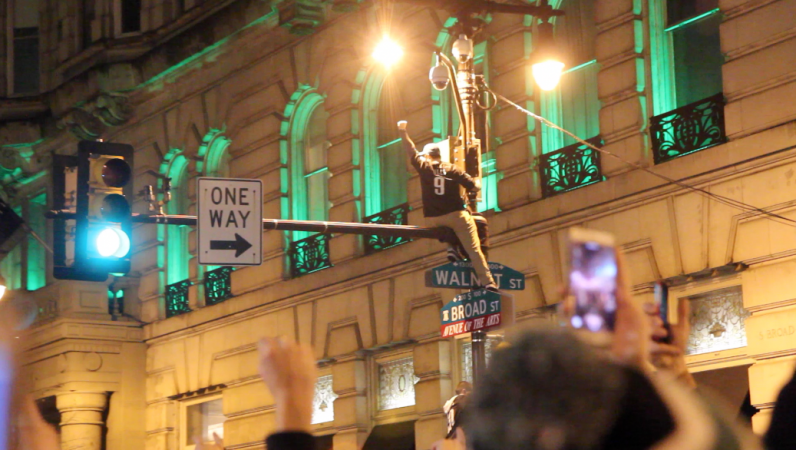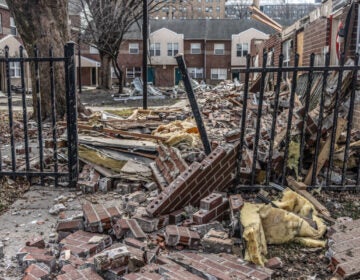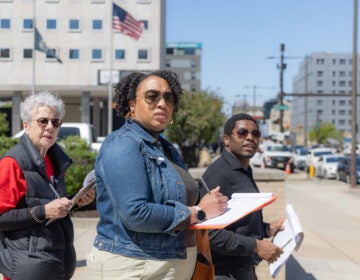Philly wins on the field and in the streets

It’s official. Boston public media station WBUR has conceded to WHYY after two weeks of smack talk. Because…Eagles won! Philadelphians took to the streets and poles to celebrate the city’s first Super Bowl win ever, dancing and climbing on whatever’s possible and halting transit by jumping onto PATCO tracks. Philadelphia Fire reported 781 EMS incidents, 153 fire Incidents, and seven structure fires and the mayor’s office shared that only three arrests were made. Philly: we can win at sportsball and throw a rad street party without calamity. Maybe we can have nice things after all.
While many fans revelled in an underdog victory, many others took to streets and train stations to celebrate their free speech. In Minneapolis, social activists who said the city became “a playground for the rich during Super Bowl week, [used] the spectacle to rally against economic injustice such as the displacement of dozens of homeless people, and the police shootings of blacks that spawned player protests at some NFL games.” The AP reports that police arrested 17 activists who blocked a light-rail line reserved for Super Bowl ticketholders to U.S. Bank Stadium. Chinyere Tutashinda, a spokeswoman for the activists, said they were protesting police brutality, as well as the light-rail lines being reserved for ticketholders while local riders were delegated to a free bus service. The AP reports that “dozens of homeless people [were] displaced because their shelter was inside the secure area around U.S. Bank Stadium;” Black Lives Matter Minneapolis chapter’s Miski Noor argued that “the Super Bowl has put marginalized communities in danger and highlights the militarization of police departments.”
At least two people were killed and at least 70 people were injured Sunday morning when an Amtrak train from New York to Miami derailed after colliding with a CSX freight train in South Carolina, NPR reports. One passenger, Kensington resident Derek Pettaway, tells the Philadelphia Inquirer’s Diane Mastrull that he was on board the train and awoke when “the train started shaking violently.” Pettaway said that “it felt like a low-grade traffic accident” and when he got outside the car he noticed the engine on its side and the café car “folded in half.” NPR summarizes the 11 incidents involving Amtrak trains since 2011, including a crash outside Charlottesville, Virginia that killed one last Wednesday.
Tattoo artist and muralist Evan Lovett believes that “murals don’t just educate; they can help revive a neighborhood.” Lovett, the mastermind behind the public artist nonprofit Visual Urban Renewal and Transformation’s popular “Local Critter” series, shares with Grid Magazine the inspirations and processes that led to the odes to Philadelphia neighborhood animals such as the “Token Squirrel” holding a SEPTA token near Norris Square Park and “Fawn Jawn,” a pair of deer painted in East Falls. It’s not just the artwork produced that’s a Philadelphia story. In Port Richmond, Natalie Shaak commissioned Lovett to paint the “Pretzel Bandit” mural on the side of her house; Shaak started a Go Fund Me campaign for the mural, and, with support from the Olde Richmond Civic Association, ultimately raised nearly $4,000 for the mural as well as new trash cans and other beautification measures.
The U.S. Census, a population database used to answer all manner of public policy and spending questions, is adding a write-in area for the non-Hispanic “White” category on the 2020 questionnaire so that participants can provide their “origins,” NPR reports. A practice form recommended people write in “German, Irish, English, Italian, Lebanese, Egyptian, etc.,” representing some of “the largest U.S. population groups descending from Europe, the Middle East and North Africa — regions with “original peoples” classified by the U.S. government as “White,” according to the federal standards for race and ethnicity data.” What could this mean for Philadelphia, a city where 34.9 percent of its 1.57 million residents self-identified in the most recent census as non-Hispanic White and 12.7 percent were foreign-born? First off, memories. One Brooklyn resident of German and Italian descent recalled discrimination against her grandparents “when they were younger that … I’m very lucky to not experience now…But there was a time when Italians weren’t considered white.” La Salle University sociologist Charles Gallagher, who studies white identity, “warns that any 2020 census numbers about white origins may not be reliable,” pointing out that “people aren’t going to have a real accurate record given years of “crossing the ethnic line and dating and marrying.” What does change: the narrative of a city. The census has been described as “a living document, with definitions and questions that – for better or worse – reflect the mores of its time” while the American Community Survey, which provides estimates between decades, “has provided a granular picture of America, including the growth of various immigrant groups.”
WHYY is your source for fact-based, in-depth journalism and information. As a nonprofit organization, we rely on financial support from readers like you. Please give today.







